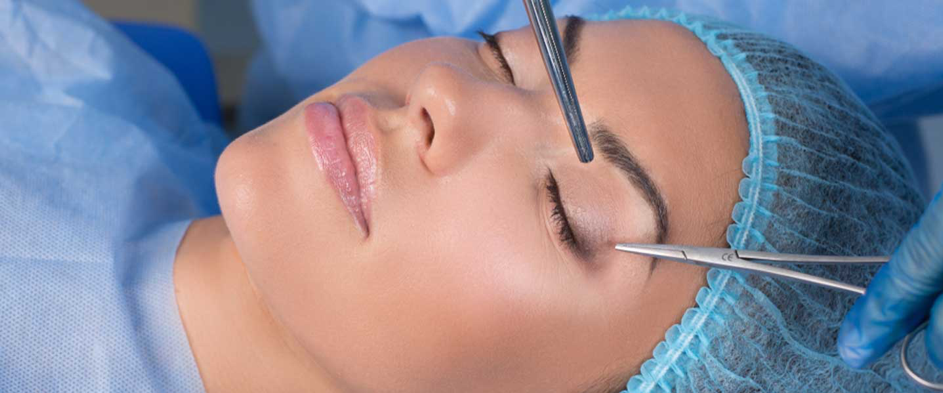Eyelid surgery improves the appearance of the upper eyelids, lower eyelids, or both. It gives a rejuvenated appearance to the surrounding area of your eyes, making you look more rested and alert.
Treatable conditions:
- Upper eyelid surgery can remove excess fatty deposits that appear as puffiness in the upper eyelids.
- Loose or sagging skin that creates folds or disturbs the natural contour of the upper eyelid, sometimes impairing vision, can be treated by eyelid lift surgery.
- Lower eyelid blepharoplasty can remove excess skin and fine wrinkles of the lower eyelid.
- Bags under the eyes can be corrected by blepharoplasty.
- Lower eyelid surgery can correct droopiness of the lower eyelids, showing white below the iris (colored portion of the eye).
Is it right for me?
A blepharoplasty procedure is usually performed on adult men and women who have healthy facial tissue and muscles and have realistic goals for improvement of the upper and/or lower eyelids and surrounding area.
You should undergo blepharoplasty surgery for yourself, not to fulfill someone else's desires or to try to fit any sort of ideal image.
What is the procedure of an eyelid surgery?

Step 1 – Anesthesia
Medications are administered for your comfort during the eyelid surgery procedure. The choices include intravenous sedation or general anesthesia. Your doctor will recommend the best choice for you.
Step 2 – The incision
The incision lines for eyelid surgery are designed for scars to be well concealed within the natural structures of the eyelid region.
Droopy conditions of the upper eyelid can be corrected through an incision within the natural crease of the upper eyelid allowing repositioning of fat deposits, tightening of muscles and tissue, and/or removal of excess skin.
Conditions of the lower eyelid may be corrected with an incision just below the lower lash line. Through this incision, excess skin in the lower eyelids is removed.
A transconjunctival incision, one hidden inside the lower eyelid, is an alternate technique to correct lower eyelid conditions and redistribute or remove excess fat.
Step 3 – Closing the incisions
Eyelid incisions typically are closed with:
Removable or absorbable sutures
Skin adhesives
Surgical tape
Your surgeon may use a laser chemical peel to erase dark discoloration of the lower eyelids.
RESULTS
The results of eyelid surgery will appear gradually as swelling and bruising subside to reveal a smooth, better-defined eyelid and surrounding region, and an alert and rejuvenated appearance.

